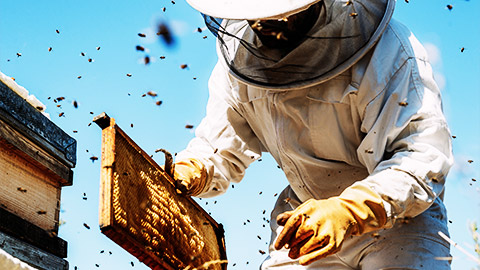In the event you suspect there is a suspicious infectious disease, it will need to be reported. If there is a disease detected in the clinic, the veterinarian will need to be notified immediately and it will need to be documented and reported. These reports will need to be carefully completed with information regarding the circumstances around the diagnosis. Certain diseases are immediately reportable to regulatory bodies, often at the time the disease is suspected but still not diagnosed.
When to report
If disease is one of a highly serious nature, it will then need to be reported to any of the following key personnel:
- the veterinarian
- state or territory’s department of primary industries for agriculture
- emergency animal diseases.
Every veterinary clinic should have a list of reportable diseases prominently displayed in an area easily accessible to clinic personnel for example, in a treatment room or noticeboard. The >Department of Agriculture, Water and Environment provides you with a full list[pdf] of the notifiable diseases of land animals.

You must also understand, these diseases will vary between countries and tend to focus on exotic pathogens and those of significant zoonotic concern such as (but not limited to):
- Rabies
- Hendra virus infection
- Swine influenza
- Avian Influenza
- Avian tuberculosis
- Foot and mouth disease.
These are all diseases that will need to be considered when looking at reporting.
What to include:
- Type of pest or disease is suspected
- Description of the clinical signs of the illness including:
- specific symptoms
- date symptoms were first noticed
- Details of the owner and clinic including:
- Address of both
- Telephone numbers.
- Type or species of animas
- Number of animals in the clinic or owned by the client
- The type of animal effected.
It is important that you make yourself aware of the clinic’s Infection Control Manual, as this should clearly state the required reporting procedures, including contact numbers for the appropriate animal health and/or public health authorities.
In some cases, you or someone who works within the clinic may be bitten or scratched by an animal. In the event this occurs, a booster tetanus shot will need to be administered as per health instruction and will need to be reported.
Fun fact!
Did you know? There are about 95 reportable diseases and 6 notifiable diseases of honeybees!

Additional documentation
- staff immunisation
Report suspected cases of disease or illness to appropriate person. If you suspect that an animal is infectious or showing signs of an infectious disease, you should isolate this animal immediately and report to your supervisor. Some workplaces may have different protocols as to how you should isolate the animal or how you should report this to your supervisor.

